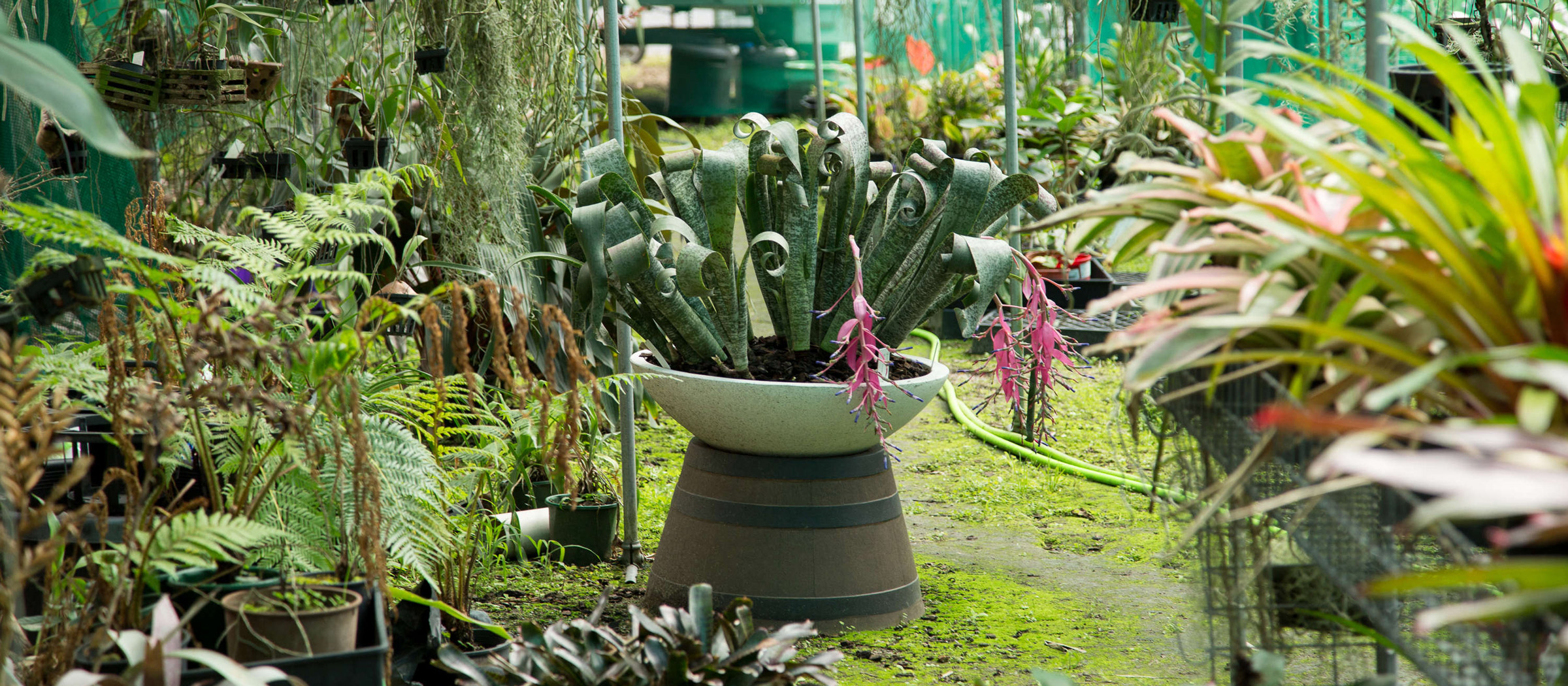Abandoned Garden Anarchy

- Words by
- Lucy Munro
- Images by
- Lucy Munro
There’s a house on the edge of nowhere, sewn into the pocket of a hillside. Standing over a hundred years old, its edges are swamped by overgrown shrubs, enormous split trees and wandering climbers; an abandoned garden in open rebellion. Nobody’s been here for some time now and at every turn there is dilapidation, ruin and rot. But there’s also a peculiar charm in the air, the kind that only lurks in places full of history and great stories. It’s been left to its own devices – part forgotten, part ignored – and alone its grown audacious, pulling silently at the seams of formality before unravelling into all-out insubordination.

I imagine it started with the blackberry bush at the back gate. With thorny limbs that snatch at woollen jumpers and loosely tied ponytails, it’s not exactly what you’d choose to welcome guests inside. Rather, I suspect in the early hours of a crisp winter morning, it covertly poked its head from the earth and proceeded to tangle its long limbs around the wooden planks with a cunningness that had the tenants swearing by lunchtime it had always been there. Was there a signal for the rest of the green troops to follow suit? A cosmic call to arms perhaps?
Before long, the garden had sealed itself from human occupation – and a raucous nature party soon ensued.”
Ancient ash (Fraxinus spp.) trees shirked convention, parading deep claret leaves on their right-hand branches, golden yellow on their left. Trunks tumbled from vertical positions, like drunken sailors on stilts, trying to stand upright. Honey locust (Gleditsia triacanthos) seedlings erupted in every direction, their limbs soon to be covered by the razor-sharp thorns and chilli pods of their forbearers, while orange gladioli trumpets multiplied like rabbits beneath the canopies above. There were sighs of relief as clipped hedges bloated free of their corseted box shapes and agave and pig’s ear (Cotyledon orbiculata) protruded from the earth. At last, unrestrained by man and his secateurs, the garden was free to grow, twist and turn with a reckless abandon only permitted in the wild.
But as it is in the wilderness, only the strongest can remain, and not all survived. Seeing the garden now is like witnessing the aftermath of that big night – despite the good memories, there’s a tired sickness in the air, a feeling only intensified by the late Autumn chill and the russet colour of the especially dry season.
Interspersed here and there are signs of decay – rotted out trees, deadened rose bushes, empty garden beds; the collateral damage of revolution.”
But then, Mother Nature never does like to be predictable, and hidden amongst her rambling chaos are signs of thriving life.
Like the colossal banksia rose, magnificent and heavy upon the structure that it grows – the colour of its flower only November will tell. Or the old lemon tree, blanketed from frosts by a guard of gleditsia and hawthorn trees – though the drought has stolen its fruit this year, its crop dwarfed and browning on the ground, an abundance of creamy scented flowers hint at a prolific yield still to come. Or the red oak that reaches thirty metres and more above the rest, planted long ago by someone who never witnessed its full majesty. But best of all is the weeping elm (Ulmus glabra ‘Camperdownii’), almost completely obscured by a massive cotoneaster (Cotoneaster spp.) that is home to what must be one of the largest, hungriest mosquito colonies on the planet.
The elm’s trunk is as straight and fat as a telephone pole, until you are beneath its canopy that is, and then looking up is like staring at the scribbles of a child’s drawing, the gnarled twisted branches wild and alive.”
There’s whisper of a tree surgeon coming to visit soon, to clear out the decay and make way for new life. Regardless of what is cut back or removed, the wild spirit of this lawless place will stay, discernible by its scent of adventure, romance and pandemonium. I get the feeling that anything could happen here, even my wildest, most unconventional ideas. Maybe that’s why people are drawn to abandoned gardens like this – the constraints of society don’t reach this far.
–







